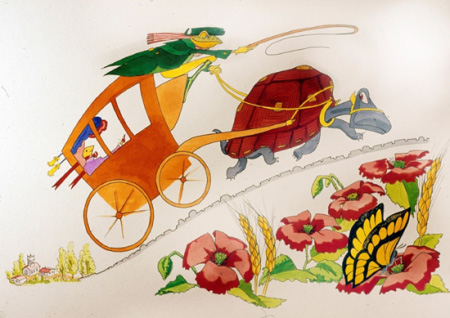|
The recent Hollywood biopic Becoming Jane (2006) invites us to imagine an adolescent Jane Austen who becomes a woman—and, to a large extent, becomes a novelist—by learning to act in unbecoming ways with the dangerously attractive Tom Lefroy. Readers of Austen’s juvenilia, however, recognize that Austen engaged in unmannerly behavior long before she encountered Tom and his temptations: she knew how stories of female development were supposed to unfold, and in writing her own she refused to play by the rules. Thanks to the work of such scholars as Margaret Anne Doody, Juliet McMaster, and Peter Sabor, it is no longer new to claim that Austen’s juvenilia deserve and will richly repay our closest attention; nor is it new to claim that the juvenilia’s treatment of fictional convention is not only parodic but actually transformative. Doody, for instance, argues that Austen “not only understood the Novel, she took the Novel apart, as one might take apart a clock, to see how it works—and she put it back together, but it was no longer the same clock” (xxxv). If it has long been a critical commonplace that Austen transformed the genre of the novel forever, it is today increasingly recognized that she decided on the necessity of doing so from a very early age.
Nonetheless, there is much yet to learn from Austen’s juvenilia about how the teenaged author understood the novel as it was in the 1790s, and how she then imagined its becoming. For one thing, the criticism that considers Austen’s youthful engagement with eighteenth-century models focuses on just a few of her early works, Love and Freindship primarily. For another, it is still rare to find any of the juvenilia, even the best-known pieces, taken seriously as novels per se. Such a reading would require us to entertain an idea still quite foreign to Austen studies: that Austen authored several novels of female development that do not end with the heroine’s marriage or engagement. Yet the juvenilia point us in this new direction, for their author is precise about generic distinctions. In Volume the First, for instance, she specifies the genre of each one of the eleven pieces of prose fiction she includes. Of the nine complete narratives in that notebook, four are “tales” and only five “novels”; the other two she calls an “unfinished tale” and “an unfinished performance.”1
Of course all five of these first “novels” challenge readerly assumptions about the genre by virtue of their very brevity, but they do so in their plotting as well, and in this paper I am particularly interested in the two that, while recognizable as novels of female bildung, do not provide husbands for their heroines. Both “The beautifull Cassandra” (c. 1788) and “Jack and Alice” (c. 1790) feature the encounters, adventures, gains and losses of young women entering the world, yet both reject the marital imperative for women. Both, furthermore, suggest quite different conditions for fulfillment from what we are likely to find endorsed in any of the eighteenth-century genres with which Austen engages, including the courtship novel, the French romance, conduct literature, and the English picaresque.
In her disappointed expectations of agency and adventure Lucy recalls Arabella, the out-of-place heroine of Charlotte Lennox’s Female Quixote (1752), whom Lennox depicts as one made ill by reading too many romances and suffering as a consequence from the delusion that her life can imitate that form of art. However, unlike Lennox Austen does not blame Lucy’s error on her reading; nor does she privilege Alice’s construction of reality over Lucy’s. In fact, both turn out to be equally inadequate. For despite occupying pride of place in the novel’s title, Alice disappears from the story two chapters before its end. Having repeatedly resisted all hints from Lady Williams that her excessive drinking may be a problem, and having learned of “the ill success” of her father’s attempt to interest Charles Adams in her hand, Alice “flew to her Bottle and it was soon forgot” (29). In her absence, however, plots of other kinds continue to proliferate, and “to the astonishment of every one” but themselves, it is Charles Adams and Lady Williams who end up marrying (32). In Unbecoming Women, Susan Fraiman argues that Georgian and Victorian novels “about girls entering the world” (3) are chiefly about “growing down,” not up, because they chronicle the deleterious effects of the “painfully confusing . . . mixed signals [that] one receives” about womanhood (x). In “Jack and Alice,” with its very unbecoming heroine, Austen concocts a Menippean mixture that makes comedy out of just this confusion, effectively satirizing the mutual incompatibility of the genres Alice and Lucy represent.
Austen also satirizes what she perceives to be an inadequacy common to both the romance and the courtship genre, namely, their failure to account fully for the ubiquity and power of selfish arrogance. Both Lucy and Alice dash themselves with equal futility against the unassailable windmill of Charles Adams’s ego; when Mr. Johnson suggests that he consider Alice as a bride, Adams responds, “‘My temper is even, my virtues innumerable, my self unparalleled. Since such Sir is my character, what do you mean by wishing me to marry your Daughter?’” (28). Lucy he turned down before the novel began. At least partly as a consequence of his disdain, neither heroine is able to accommodate herself to the world she finds herself in: Alice hides in her bottle, as we have seen; Lucy travels to Bath with Alice’s neighbors, the Simpsons, where she conquers the heart of a decrepit but wealthy duke, only to be poisoned by the chronically envious Sukey Simpson (31). Lucy and Alice themselves are strongly self-centered, but their desires are opposed by the more skillfully selfish; as Doody among others has pointed out, Charles Adams and Lady Williams “claim to be good and benevolent,” but really they “are highly successful egotists in their own right” (xxxv). Consequently, Alice and Lucy do not simply grow “down,” as Fraiman would have it; they grow (or are pushed) completely out.
Like Cassandra, Lucy can take care of herself out in the world; she has, after all, succeeded in making her way from Wales to Charles Adams’s estate. However, in her dealings with the opposite sex Lucy has usurped privileges of pursuit and of interpretation that convention allows only to men. As Lucy explains to her rescuers, she proposed to the dazzling Charles several times, unsuccessfully. Finally, choosing to think his “refusal . . . the effect of his modesty” (24), she got assertive and chased after him. But the broken leg is her reward. In sympathy, Alice exclaims, “‘Oh! cruel Charles to wound the hearts and legs of all the fair,’” and on one reading, Lucy is indeed the victim of his cruelty (25). On another reading, however, she is the victim of conflicting narratives of development, for she has tried to use male-gendered means to achieve a female-gendered goal. Whereas marriage is often the reward of a young man’s self-fashioning, it is seldom the proof of his success, but it is just that for Lucy, and indeed for almost every woman in “Jack and Alice.” Cassandra, by contrast, is as single-minded in her dismissal of such a goal as in her commitment to a life of acquisition and liberty. Thus “The beautifull Cassandra” invites us to delight in imagining a girl enjoying masculine adventures, a girl who can set out into the world and master it—or, at least, master its Pastry Chefs and hackney drivers. Conflicting and uncongenial imperatives make up the trap that ultimately breaks a girl’s heart—or her leg—unless she can keep her eyes, as Cassandra does, firmly on the real prize of independent pleasure.
However, if in “The beautifull Cassandra” Austen rejects the conventional happy ending for women, namely marriage, she rejects the male novel of development’s conventional ending equally firmly. Essential to the plot of any young man’s maturation, at least since Homer had Telemachus set out from Ithaca, is the absolute necessity of cutting those apron strings and divesting oneself of any maternal influence. This heroine’s voyage is circular, ending in neither marriage, nor defeat, nor a newly achieved position in society, but in a return to the maternal bosom from which she set forth. Whereas Austen holds the narratives of male and female development in tension with one another throughout most of the novel, then, her conclusion brings to an identically abrupt end the conventional trajectories of both.
Furthermore, Austen’s juvenilia calls into question one of the most defining novelistic conventions, for it is difficult to find, in either “The beautifull Cassandra” or “Jack and Alice,” any evidence of character development or psychological maturation occurring over the course of the narrative. Alice never learns to moderate her drinking; whatever Lucy may have learned cannot save her from Sukey’s malice, and Cassandra’s escapade with the hackney coach strongly suggests that her misadventure in the pastry shop has not produced a more cautious approach to incurring debt. If anything, the only change we may chart in this young heroine is an increase in confidence, a confidence in those abilities to negotiate the social and fiscal world which appear to have emerged in all their fully developed perfection the instant she assumed that magical bonnet. The bildungsroman hero, typically, becomes willing as he matures to accommodate himself to society’s rules and restrictions; Cassandra’s willingness to manipulate people and their rules, I would argue, is Austen’s version of this adaptive self-fashioning.
Austen may leave unresolved the question of whether one must be born greatly manipulative or whether one may learn to achieve manipulative greatness, but both “Jack and Alice” and “The beautifull Cassandra” do insist upon how important it is for both men and women to be able to manipulate others, and to manipulate how others see them, in particular. The most successful characters in both novels are masters of this craft. Charles Adams is the obvious example; at the masquerade, he is in perfect control of how others see him. Since he appears wearing “a Mask representing the Sun,” the others are blinded by his appearance, until he “half shut[s] his eyes,” at which moment “the Company discovered him to be Charles Adams in his plain green Coat, without any mask at all” (15-16). Meanwhile, his brilliant gaze has seen right through everyone else’s disguise.
Austen also suggests that Adams’s future wife, Lady Williams, may be similarly skilled. We know that she is an expert manipulator of legs, at least, for it is she who sets Lucy’s fracture “with great skill[,] which was the more wonderfull on account of her having never performed such a one before” (25). Her subsequent dealings with both Lucy and Alice further suggest that she is just as good at manipulating hearts:
“Why do you hesitate my dearest Lucy, a moment with respect to the Duke? I have enquired into his Character and find him to be an unprincipaled, illiterate Man. Never shall my Lucy be united to such a one! He has a princely fortune, which is every day encreasing. How nobly will you spend it! . . . It will to be sure be a great expence to me, to have you always with me—I shall not be able to support it—but what is that in comparison with the happiness I shall enjoy in your society?—t’will ruin me I know—you will not therefore surely, withstand these arguments, or refuse to return to yours most affectionately—&c &c.” (30-31)
Such bafflingly contradictory guidance as this leaves Lucy little choice but to hesitate: Lady Williams’s advice here is as impossible to follow as her logic. And the rhetoric she directs at Alice is similarly disabling. A few chapters earlier we find her offering Alice insult disguised as assiduity: “‘I am afraid my dear Girl that I have offended you by what I have just said; I assure you I do not mean to distress you by a retrospection of what cannot now be helped; considering all things I do not think you so much to blame as many People do; for when a person is in Liquor, there is no answering for what they may do’” (21). Alice is never able to manipulate Charles Adams into seeing her as eligible, whereas Lady Williams does affect how Alice sees herself, driving her repeatedly to rage (and possibly to drink).
Lady Williams, then, is an older woman who dispenses impracticable advice and cold comfort to younger women who are unsure about how to read either themselves or the men around them. As such, I would argue, she represents the discouraging and disempowering effect of yet another genre to which young eighteenth-century women turned for guidance: conduct literature. It is not clear whether Lady Williams deliberately sets out to confuse her young listeners; Joseph Wiesenfarth et al. read her tangled logic as evidence of “stupidity in the guise of profundity,” and her reasoning is so reliably confused throughout the novel that this is certainly an attractive reading (xii). We may find it suspicious that the two recipients of Lady Williams’s most disabling rhetoric are also her rivals, but ultimately her intentions are less important than her affiliations. As many have noted, Austen’s mature novels demonstrate a familiarity with the discourse of conduct and advice, and Lady Williams is evidence that the young Austen of “Jack and Alice” is already deeply suspicious of this genre’s contribution to what Fraiman terms the “larger, cacophonous discourse about female formation” (12). Indeed, according to “Jack and Alice” language itself is the chief tormenter of the young.
Cassandra’s own egocentricity, on the other hand, renders her immune to such torment, and allows her to do a little manipulation of her own. She never asks for advice or stays in one spot long enough for anyone to criticize her at length. And, much like Charles Adams and Lady Williams both, she has the particular power to manipulate how others see her. Unlike her counterparts in “Jack and Alice,” however, Cassandra’s disregard of others serves neither to attract and enhance the adoration of others, nor to disarm the competition for eligible mates. Her unorthodox response to the viscount’s greeting invites him to change how he sees himself—from eligible bachelor to uninteresting intrusion. She reacts a little more to the sight of Maria, whose position in the narrative suggests that she could be a rival. But only the pastry cook and coachman are threats worth attacking.
Both “Jack and Alice” and “The beautifull Cassandra,” then, affirm the pragmatic value of compromise and manipulation for both male and female characters. On this important topic, Austen’s understanding of bildung appears to be less in line with Fraiman’s than with that of Lorna Ellis, who has argued that the male and female bildungsromane really constitute a shared genre. According to Ellis, both male and female bildungsromane protagonists face “personal diminishment” (19), and female heroines also resemble their male counterparts in that they “are able to gain a qualified power” once they “learn to work within ‘the system’” (18). Nevertheless, “Jack and Alice” and “The beautifull Cassandra” do more than add weight to one side or the other of this longstanding debate over whether the bildungsroman genre is split at its root. For in both of these two early novels, we find Austen doing some very modern things with narrative that she does not do so overtly in any of her mature novels: she unlinks marriage from maturation, and she affirms the centrality of the maternal bond. In these ways she anticipates genres of female bildung that are usually considered to have emerged decades later, the “novel of awakening” and the novel of “spiritual Bildung” in particular.
Insofar as both “Jack and Alice” and “The beautifull Cassandra” function to unlink marriage from maturation for women, they anticipate what Susan J. Rosowski terms, in an influential article, the “novel of awakening.” Taking Madame Bovary (1856) as her prototype, Rosowski describes such a novel as one in which the heroine experiences, well after marriage, a “revelation of the disparity” between the self she has come to know and the world’s view of that self (49). Although self-revelations are scarce in “Jack and Alice” and “The beautifull Cassandra,” and marriages only slightly less so, both novels nevertheless awaken the reader to the possibility that psychological maturation may not be the consequence of a young woman’s journey into the world, nor marriage the reward of any maturation that may occur. Alice’s final flight to the bottle may even be read as evidence of an awakening of sorts: the disparity between how she views herself and how Charles Adams views her has become unbearable (at least as long as she remains sober). Alice’s disappearance thus comically anticipates the suicide which closes both Madame Bovary and the later novel that gave its name to Rosowski’s newly identified genre: The Awakening by Kate Chopin (1899).
Furthermore, “The beautifull Cassandra” anticipates by some decades what Marianne Hirsch considers to be the emergence of another post-eighteenth-century genre: the novel of “spiritual Bildung” in which the heroine’s development of the “total individual” is “rooted in childhood” (37). The earliest example in English of this genre that Hirsch identifies is George Eliot’s Mill on the Floss (1860), yet Austen was, in 1787, already affirming the environment of childhood as, in Hirsch’s terms, a “presence to return to, necessary [to women] precisely because female development is so fragmented and discontinuous” (44). While most of Cassandra’s day off is indeed “fragmented and discontinuous,” Austen’s circular plot affirms Cassandra’s childhood home as nurturing and congenial, even though we cannot be sure just what it is that makes Cassandra’s mother welcome her daughter so warmly. It cannot be Cassandra’s sense of decorum; it may well be her amoral self-reliance. But perhaps it is also her appreciation for a fine bonnet and the craft that produced it.
Unlike Lucy or Alice, then, Cassandra’s trajectory is not to arrive in the bosom of her beloved but to return to the bosom of her mother. Hence she is able actively to disregard the very opinions that, as Austen well knows, must matter to any marriageable miss. Similarly, Austen herself in both these early novels actively disregards the very opinions that must matter to any marketable novelist. She critiques the contradictory and often-debilitating nature of such opinions. She rejects as unreasonable the notion that marriage has anything to do with virtue, self-awareness, or satisfaction. Instead, what she celebrates is craft.
Notes All illustrations are by Juliet McMaster, from The Beautifull Cassandra (Sono Nis, 1993) and Jack and Alice (Juvenilia, 2001), and are used with her kind permission.
1. The “tales” are “Edgar and Emma” (33-37), “The Adventures of Mr Harley” (46), “Amelia Webster” (57-60), and “The Generous Curate” (94-95). The “novels” are “Frederic and Elfrida” (3-12), “Jack and Alice” (13-32), “Henry and Eliza” (38-45), “The beautifull Cassandra” (53-56), and “The Three Sisters” (73-89). “Sir William Mountague” is “an unfinished performance” (47-49), “and “Memoirs of Mr Clifford” is “an unfinished tale” (50-52). All references are to Austen’s Juvenilia, edited by Peter Sabor.
2. For instance, in Frances Burney’s Evelina (1778) the well-made bonnet functions as a potent symbol of maturity, sign of a young woman’s readiness to leave childhood behind and enter the beau monde with its Marriage Mart. Lord Orville is able to recognize Evelina even from a distance, when she is seated with the Branghtons in the opera’s highest and cheapest seats, because “he distinguished me by my head-dress” (vol.1, let. 21). By contrast, one of the signs of Madame Duval’s irredeemable vulgarity is her opposition to “ladies . . . with hats on” (vol. 1, let. 16). However, although Burney associates Evelina’s new hats and hairstyles with exciting opportunities to see and be seen, she associates them also with the difficult lessons in deportment that a newly out girl must learn to accept. Evelina explains her awkwardness before and during her very first ball in terms of hairdressing and headgear; her head felt strange, she complains. And they missed the minuet entirely because of the milliners (vol. 1, let. 11). Works Cited Abel, Elizabeth, Marianne Hirsch, and Elizabeth Langland, eds. The Voyage In: Fictions of Female Development. Hanover: UP of New England, 1983. Austen, Jane. Juvenilia. Ed. Peter Sabor. Cambridge; CUP, 2006. Becoming Jane. Dir. Julian Jarrold. Miramax, 2007. Burney, Frances [Fanny]. Camilla or, a Picture of Youth. Ed. Edward A. Bloom and Lillian D. Bloom. Oxford: OUP, 1972. _____. Evelina. Ed. Kristina Straub. Boston: Bedford, 1997. Chopin, Kate. The Awakening. 1899. Ed. Margaret Culley. New York: Norton, 1976. Doody, Margaret Anne. Introduction. “Catharine” and Other Writings. Ed. Margaret Anne Doody and Douglas Murray. Oxford: OUP, 1993. ix-xxxviii. Ellis, Lorna. Appearing to Diminish: Female Development and the British Bildungsroman, 1750-1850. London: Associated UP, 1999. Eliot, George. The Mill on the Floss. 1860. Ed. Harold Bloom. New York: Chelsea, 1988. Flaubert, Gustave. Madame Bovary. 1856. Ed. Stephen Heath. Cambridge: Cambridge UP, 1992. Fraiman, Susan. Unbecoming Women: British Women Writers and the Novel of Development. New York: Columbia UP, 1993. Hirsch, Marianne. “Spiritual Bildung: The Beautiful Soul as Paradigm.” Abel et al 23-48. Lennox, Charlotte. The Female Quixote. 1752. Oxford: OUP, 1989. McMaster, Juliet, illus. and ed. The Beautifull Cassandra. By Jane Austen. Victoria, BC: Sono Nis, 1993. _____, illus. Jack and Alice. By Jane Austen. Ed. Joseph Wiesenfarth, Laura Maestrelli, and Kristin Smith. Edmonton: Juvenilia P, 2001. Rosowski, Susan J. “The Novel of Awakening.” Abel et al 49-68. Wiesenfarth, Joseph, Laura Maestrelli, and Kristin Smith. Introduction. Jack and Alice. By Jane Austen. Ed. Joseph Wiesenfarth, Laura Maestrelli, and Kristin Smith. Edmonton: Juvenilia P, 2001. viii-xv.
|


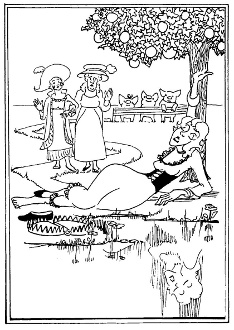 Even Austen’s earliest novels reflect a sophisticated awareness
of just how numerous, incompatible, and inadequate were the
developmental narratives available to female readers of her
generation. The titular heroine of “Jack and Alice”
is a gently-bred but far from perfect young woman who falls in
love with an eligible bachelor, one Charles Adams, on the occasion of
a Masquerade ball given by her father: for a courtship novel, an
unexceptional situation so far. But mid-way through the novel,
Austen introduces into the prosaic landscape of Alice’s world
another heroine, and with her another set of narrative conventions.
Lucy is a “lovely young Woman” who could almost have
stepped out of the pages of one of Madeleine de Scudéry’s
romances (22). Alice and her mentor Lady Williams encounter
Lucy lying with a broken leg not far from “Charles Adams’s
Horsepond” (20), having been “‘caught in one of the
steel traps so common in gentlemen’s grounds’”
(24). But before she requests more practical assistance from
her new-found confidantes, Lucy recounts a lengthy and leisurely
embedded narrative about her “‘Life and Adventures’”
to this point, in which we learn that she has traveled all the way
from Wales, alone, in pursuit of her beloved and in despite of
Georgian decorum (22). Unfortunately, the object of Lucy’s
affections turns out to be the same Charles Adams for whom Alice has
set her cap and into whose trap Lucy has now stumbled.
Even Austen’s earliest novels reflect a sophisticated awareness
of just how numerous, incompatible, and inadequate were the
developmental narratives available to female readers of her
generation. The titular heroine of “Jack and Alice”
is a gently-bred but far from perfect young woman who falls in
love with an eligible bachelor, one Charles Adams, on the occasion of
a Masquerade ball given by her father: for a courtship novel, an
unexceptional situation so far. But mid-way through the novel,
Austen introduces into the prosaic landscape of Alice’s world
another heroine, and with her another set of narrative conventions.
Lucy is a “lovely young Woman” who could almost have
stepped out of the pages of one of Madeleine de Scudéry’s
romances (22). Alice and her mentor Lady Williams encounter
Lucy lying with a broken leg not far from “Charles Adams’s
Horsepond” (20), having been “‘caught in one of the
steel traps so common in gentlemen’s grounds’”
(24). But before she requests more practical assistance from
her new-found confidantes, Lucy recounts a lengthy and leisurely
embedded narrative about her “‘Life and Adventures’”
to this point, in which we learn that she has traveled all the way
from Wales, alone, in pursuit of her beloved and in despite of
Georgian decorum (22). Unfortunately, the object of Lucy’s
affections turns out to be the same Charles Adams for whom Alice has
set her cap and into whose trap Lucy has now stumbled.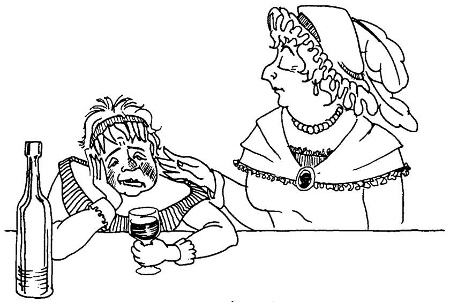
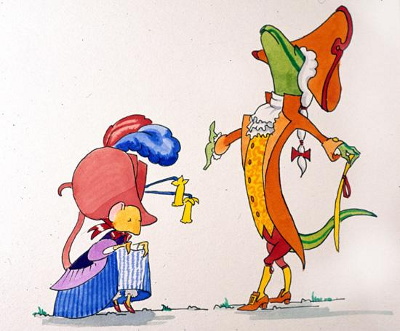 Austen is also sensitive to the dangers that await a young woman
foolish enough to think that girls’ lives can imitate boys’
stories, but although “The beautifull Cassandra”
challenges us to recognize how incompatible are the paths that
young women and men are expected to take, it offers a much less bleak
vision than “Jack and Alice” does of the fate
attending a young woman who dares to defy—or
confuse—convention. A beautiful girl in “her 16th
year,” Cassandra sounds like a typically marriageable maiden,
but she begins her adventures by entering the world rather in the
manner of a rogue: heading out “to make her Fortune,”
she chances “to fall in love with an elegant Bonnet,”
which she promptly lifts (54). A more predictable feature of
the female novel of development is the handsome eligible aristocratic
man, and he does appear in Cassandra’s path almost immediately,
but upon meeting the “celebrated . . . Viscount of
―—,” she snubs him; she prefers to devote herself
to “six ices,” which she pays for by knocking down the
“Pastry Cook” (54). Following this successful
battle, Cassandra takes a “Hackney Coach” to Hampstead
and back, for which journey she again refuses to pay (55). On
her way home she exchanges significant glances with one Maria, whose
significance she immediately forgets. Finally returning to “her
paternal roof” after an absence of “nearly 7 hours”
(56), Cassandra celebrates her remarkable “‘day well
spent’” while “pressed to her Mother’s bosom”
(56). Although she has consistently chosen physical pleasure
and risky adventure over decorous courtship, Cassandra’s story
ends with her perfect satisfaction.
Austen is also sensitive to the dangers that await a young woman
foolish enough to think that girls’ lives can imitate boys’
stories, but although “The beautifull Cassandra”
challenges us to recognize how incompatible are the paths that
young women and men are expected to take, it offers a much less bleak
vision than “Jack and Alice” does of the fate
attending a young woman who dares to defy—or
confuse—convention. A beautiful girl in “her 16th
year,” Cassandra sounds like a typically marriageable maiden,
but she begins her adventures by entering the world rather in the
manner of a rogue: heading out “to make her Fortune,”
she chances “to fall in love with an elegant Bonnet,”
which she promptly lifts (54). A more predictable feature of
the female novel of development is the handsome eligible aristocratic
man, and he does appear in Cassandra’s path almost immediately,
but upon meeting the “celebrated . . . Viscount of
―—,” she snubs him; she prefers to devote herself
to “six ices,” which she pays for by knocking down the
“Pastry Cook” (54). Following this successful
battle, Cassandra takes a “Hackney Coach” to Hampstead
and back, for which journey she again refuses to pay (55). On
her way home she exchanges significant glances with one Maria, whose
significance she immediately forgets. Finally returning to “her
paternal roof” after an absence of “nearly 7 hours”
(56), Cassandra celebrates her remarkable “‘day well
spent’” while “pressed to her Mother’s bosom”
(56). Although she has consistently chosen physical pleasure
and risky adventure over decorous courtship, Cassandra’s story
ends with her perfect satisfaction.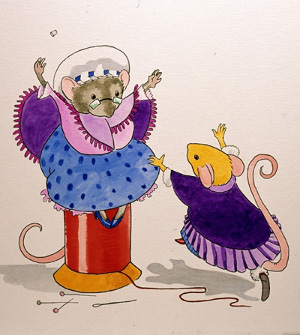
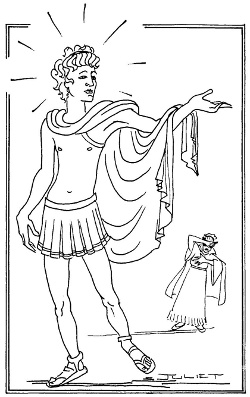
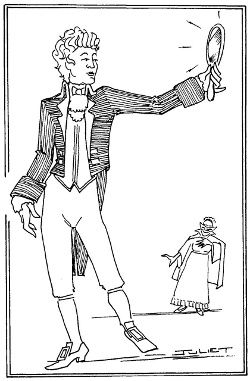
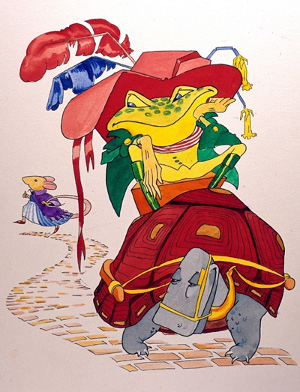 We cannot be sure of the viscount’s reaction, or gauge how much
he is affected by Cassandra’s refusal to reflect his
desirability, but when she uses her bonnet to manipulate the gaze of
the “Hackney Coach” driver the effect is immediate and
dramatic. More typically, I would suggest, an
eighteenth-century heroine’s first grown-up headgear symbolizes
both the liberty to come out from under the maternal roof, and the
limits to her liberty that a newly “out” girl must learn
to accept: blinkered, however fashionably, she must not set her
sights too high or let her eye roam too freely.
We cannot be sure of the viscount’s reaction, or gauge how much
he is affected by Cassandra’s refusal to reflect his
desirability, but when she uses her bonnet to manipulate the gaze of
the “Hackney Coach” driver the effect is immediate and
dramatic. More typically, I would suggest, an
eighteenth-century heroine’s first grown-up headgear symbolizes
both the liberty to come out from under the maternal roof, and the
limits to her liberty that a newly “out” girl must learn
to accept: blinkered, however fashionably, she must not set her
sights too high or let her eye roam too freely. Certainly Austen leaves her heroine perfectly positioned to borrow
another bonnet on another day, or to learn how to build one for
herself. Cassandra’s mother is a “celebrated
Millener in Bond Street,” renowned, in other words, as an
artisan if not as an artist (54). There seems to be some talent
for fiction in the family as well, quite apart from Cassandra’s
talent for misrepresenting her ability to pay. When Austen
writes that Cassandra’s father “was of noble Birth, being
the near relation of the Dutchess of —’s Butler,”
she blurs her narrator’s perspective with that of the character
she describes in a passage as deft as any we may find in her mature
novels (54). If Cassandra’s father’s “noble
Birth” has acquired, within his family at least, the status of
a truth that ought to be universally acknowledged, then this parent,
too, knows something about self-fashioning. Home is just where
Cassandra needs to be if she is to develop her creative habit,
continue to indulge her first love (bonnets), and escape the
diminishing effects of viscounts and rivals.
Certainly Austen leaves her heroine perfectly positioned to borrow
another bonnet on another day, or to learn how to build one for
herself. Cassandra’s mother is a “celebrated
Millener in Bond Street,” renowned, in other words, as an
artisan if not as an artist (54). There seems to be some talent
for fiction in the family as well, quite apart from Cassandra’s
talent for misrepresenting her ability to pay. When Austen
writes that Cassandra’s father “was of noble Birth, being
the near relation of the Dutchess of —’s Butler,”
she blurs her narrator’s perspective with that of the character
she describes in a passage as deft as any we may find in her mature
novels (54). If Cassandra’s father’s “noble
Birth” has acquired, within his family at least, the status of
a truth that ought to be universally acknowledged, then this parent,
too, knows something about self-fashioning. Home is just where
Cassandra needs to be if she is to develop her creative habit,
continue to indulge her first love (bonnets), and escape the
diminishing effects of viscounts and rivals.